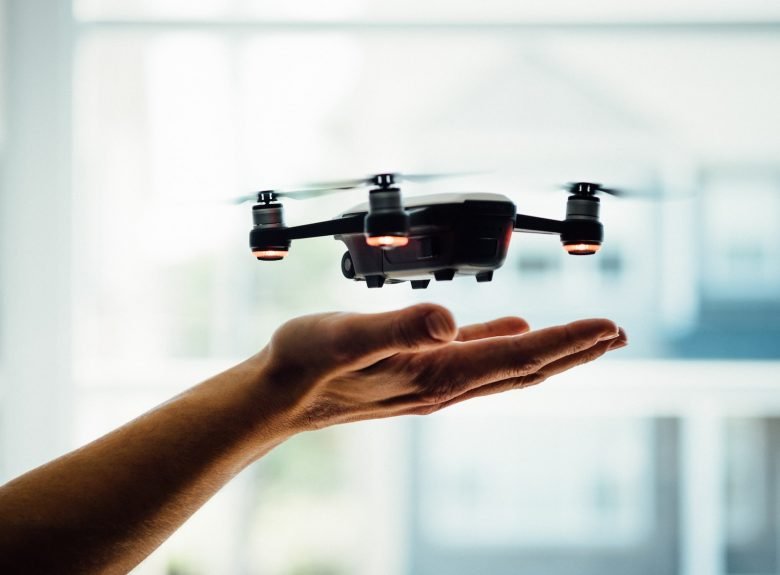Drones, often called unmanned aerial vehicles (UAVs), are not just for recreational purposes or filmmaking. They’re becoming an invaluable tool in various sectors, and law enforcement is one field reaping their benefits. This article will explore how modern policing integrates drones into their operations.
Understanding Drones in Policing
Police drones refer to small aerial vehicles equipped with cameras and sometimes other sensors. They fly over areas to gather information, provide live feeds, and sometimes even assist in real-time operations. They don’t replace traditional policing but act as an additional tool in the law enforcement toolkit.
Read Also: How To Select the Perfect Drone Photographer for Your Business Needs
Benefits of Drones in Policing
Efficiency and Speed: Drones can quickly reach areas, often faster than officers on foot or in vehicles. This speed is especially useful in monitoring large crowds or searching vast areas.
Cost-effective: In many scenarios, using a drone is less expensive than deploying helicopters or large teams of officers. They offer a quick and efficient means to get an aerial view without the hefty price tag.
Improved Safety: Drones can be sent into potentially hazardous situations without risking officer safety. They can scout ahead, providing essential data before officers arrive.
Versatility: With technological advancements, drones can now be equipped with various sensors, including thermal imaging, which can be particularly helpful during nighttime operations.
Applications of Drones in Modern Policing
Traffic Monitoring: Drones offer a bird’s-eye view of traffic situations. They help monitor congested areas, study traffic flow, and even investigate accident scenes.
Search and Rescue: In scenarios where individuals are lost or in danger, drones provide a fast and efficient way to scan large areas. They can reach places difficult for humans and provide real-time data to rescue teams.
Crime Scene Analysis: Police drones provide a unique perspective on crime scenes, especially vast ones. Capturing aerial footage can aid in understanding the sequence of events and gathering evidence.
Monitoring Large Gatherings: During events or protests, drones can give an overhead view, helping the police maintain order and ensuring public safety.
Pursuits: If a suspect is on the run, drones can track movements without the challenges a ground pursuit might face.
Concerns and Ethical Implications
While the benefits are clear, using drones in policing raises various concerns.
Privacy: One of the most significant concerns is the potential invasion of privacy. With drones being able to capture footage from above, there’s a fear of misuse or unwarranted surveillance.
Data Security: As drones gather and transmit data, there’s a potential risk of this data being intercepted or misused.
Potential Misuse: There’s always a concern about any technology being misused, and drones are no exception. Clear guidelines and regulations are crucial to prevent any potential misuse.
Read Also: Sustainable Tech: Innovations Driving Environmental Conservation
Regulations and Guidelines
Several regulations and guidelines have been put in place in different regions worldwide to address the concerns.
Restricted Areas: There are areas where drone usage is prohibited or restricted. This includes areas near airports, government buildings, or other sensitive locations.
Data Handling: Rules about how the data captured by drones should be stored, processed, and shared are essential to safeguard individual rights and maintain trust.
Training: Officers usually undergo rigorous training before operating a drone for law enforcement purposes. This ensures they understand the technical and ethical implications of their actions.
Looking Ahead
As technology advances, drones’ role in policing is likely to expand. Integrating drones into modern policing techniques offers a blend of efficiency, safety, and cost-effectiveness. However, as with all tools, it’s essential to use them responsibly, considering both their potential benefits and the ethical concerns they raise.
Ultimately, drones are another step towards modernizing law enforcement, ensuring officers have the best tools while maintaining the trust and safety of the public they serve.
Read Also: Where Passion Takes Flight: Discovering RC Hobby Shops
The Evolution of Drone Technology in Policing
As drones gain popularity in law enforcement, the technology behind them continues to evolve.
Extended Flight Times: Early drones had limited flight times, often needing recharging after a short period. Modern drones now come with more extended battery lives, allowing them to stay airborne longer and complete extended missions.
Enhanced Camera and Sensory Capabilities: Drones are no longer just about basic video capture. Advanced models now offer 4K video resolution, zoom capabilities, and even infrared sensors to detect heat signatures. This technological evolution can be particularly useful in search and rescue missions or when looking for suspects.
Real-time Communication: Modern drones can relay information in real-time, allowing command centers to make immediate decisions based on the data drones provide. This is invaluable during time-sensitive operations.
Conclusion
The integration of drones into modern policing techniques signifies an important step in embracing technology to enhance law enforcement’s efficiency and effectiveness. While there are undeniable benefits, addressing the challenges and concerns associated with their use is equally important. By fostering transparency, ensuring rigorous training, and continuously updating regulations, drones can serve as a valuable tool in the hands of law enforcement, striking a balance between innovation and ethical responsibility.
